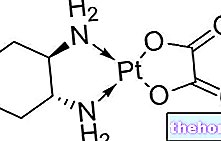Escitalopram is an antidepressant drug belonging to the class of selective serotonin reuptake inhibitors (SSRIs). In reality, escitalopram is none other than the S enantiomer of citalopram (in fact, it reads es-citalopram).

(R, S) - Citalopram - Chemical Structure
Studies have been reported in the literature that state that the activity of citalopram is to be attributed exclusively to the S enantiomer, while the R enantiomer only weakens the action of the other isomer by competing with it for binding with SERT (the transporter responsible for the reuptake of serotonin). Furthermore, the R-enantiomer is eliminated more slowly than the S-enantiomer, therefore - when the drug is administered in racemic form (citalopram) - the inactive R-isomer predominates, thus preventing the binding of the S-isomer All these reasons constitute an incentive for the use of the enantiomerically pure form of S-citalopram, ie for the use of escitalopram.
Escitalopram exhibits the exact same affinity and selectivity as citalopram towards the transporter responsible for the reuptake of serotonin within the presynaptic termination. Therefore, the mechanism of action and pharmacokinetics of escitalopram are comparable to those of citalopram. The same goes for side effects and contraindications.
However, unlike citalopram, escitalopram - in addition to being used for the treatment of major depression and anxiety disorders with panic attacks, with or without agoraphobia - can also be used for the treatment of:
- Social anxiety disorder;
- Generalized anxiety disorder;
- Obsessive Compulsive Disorder.




























